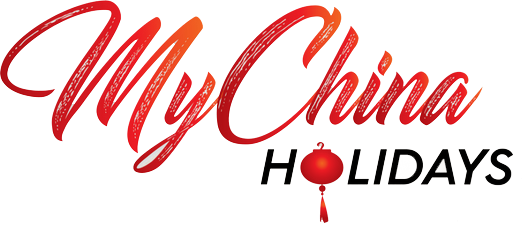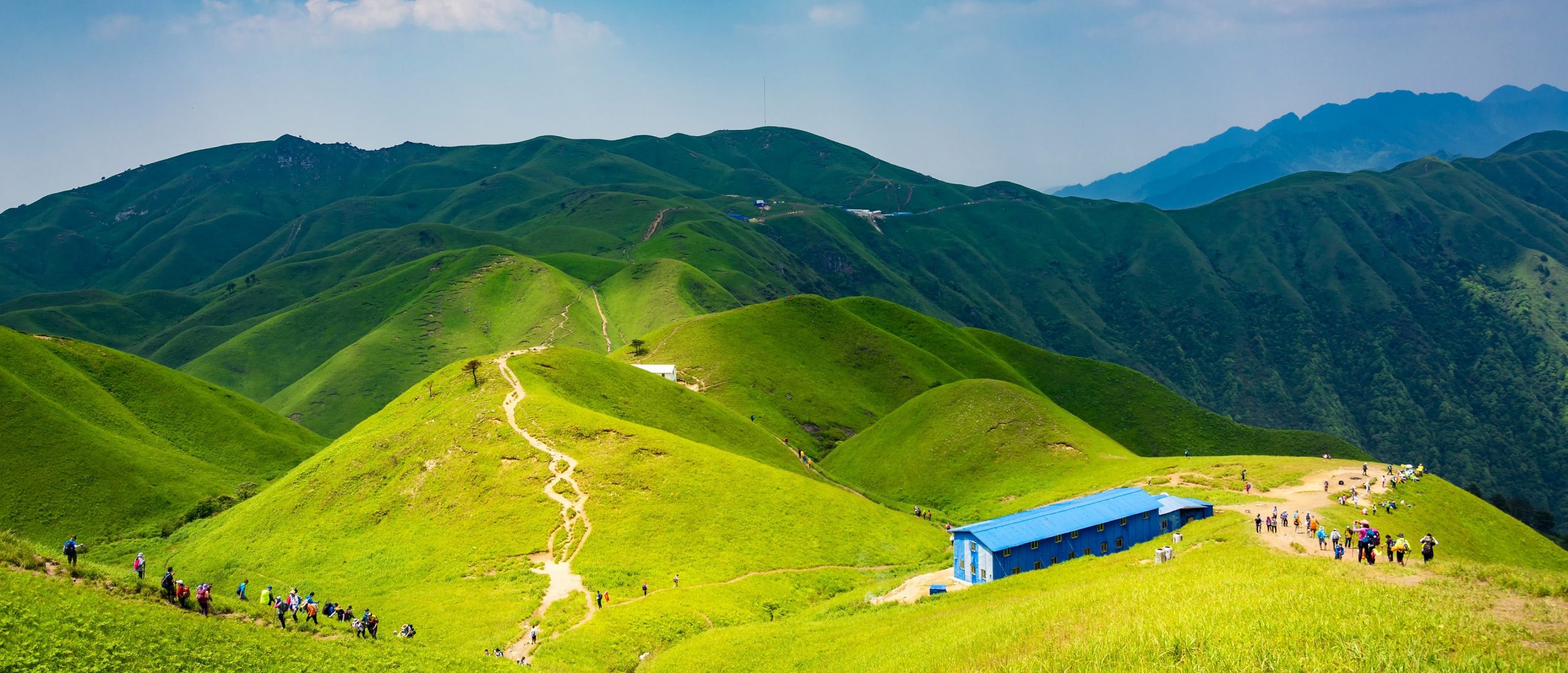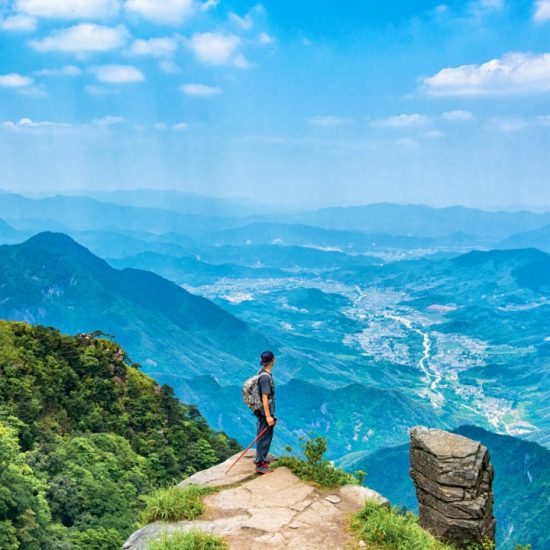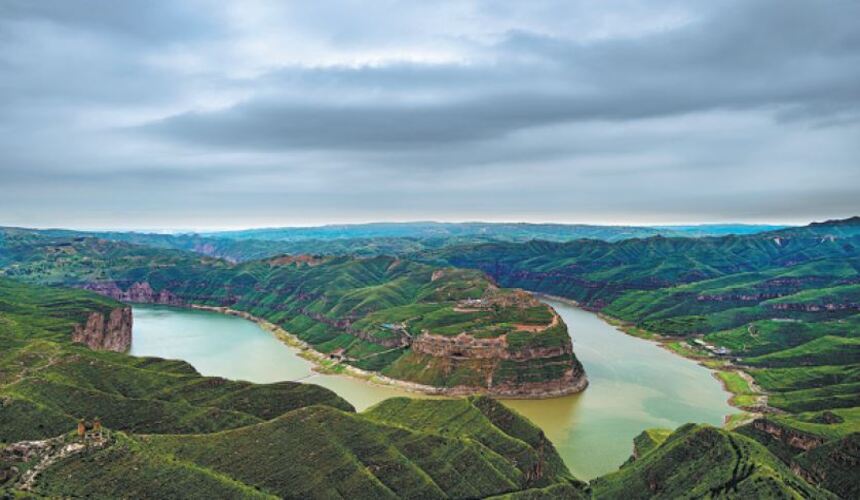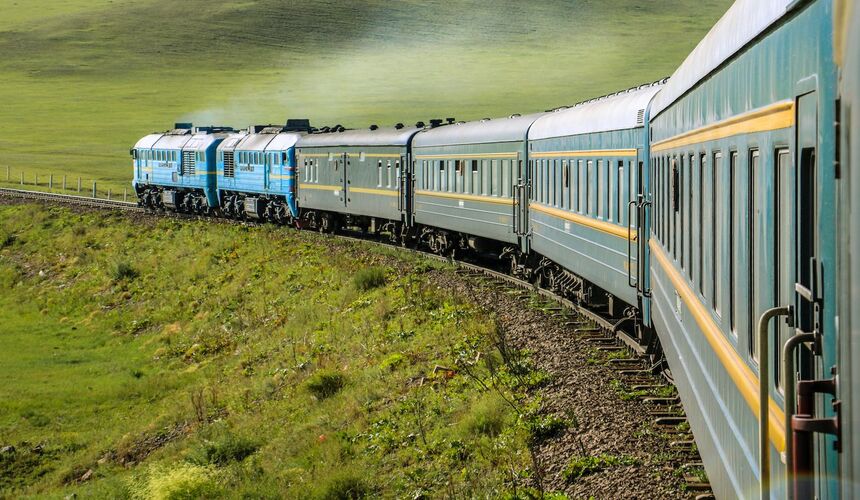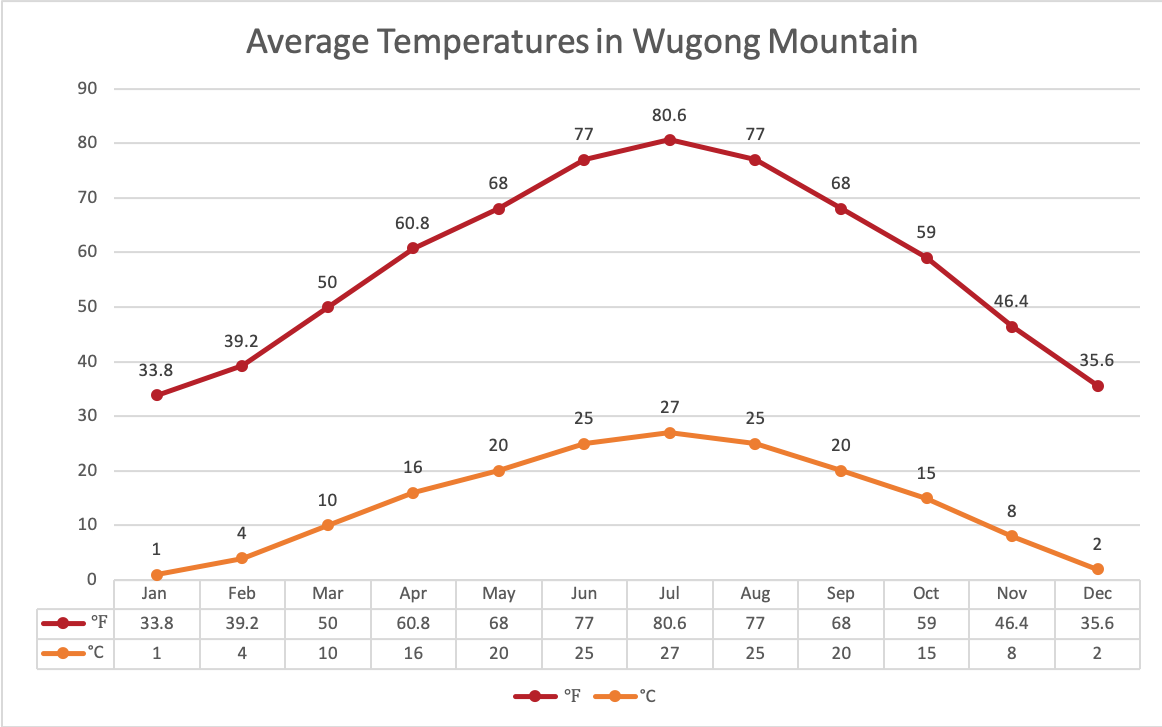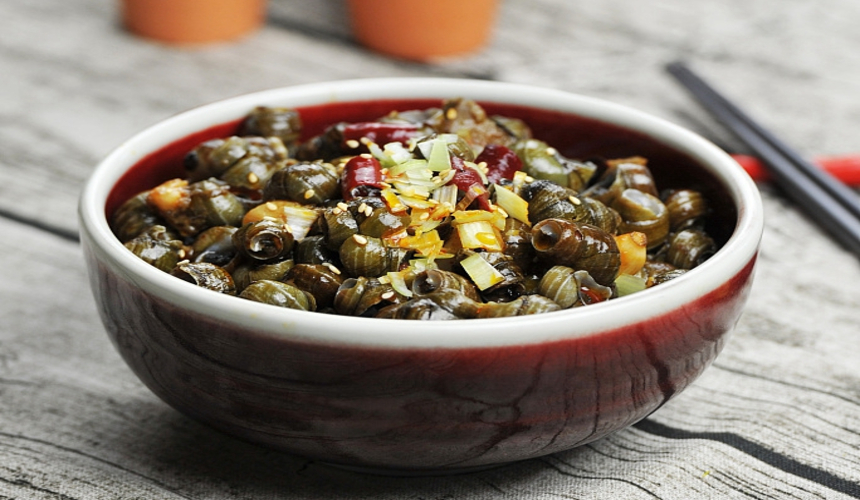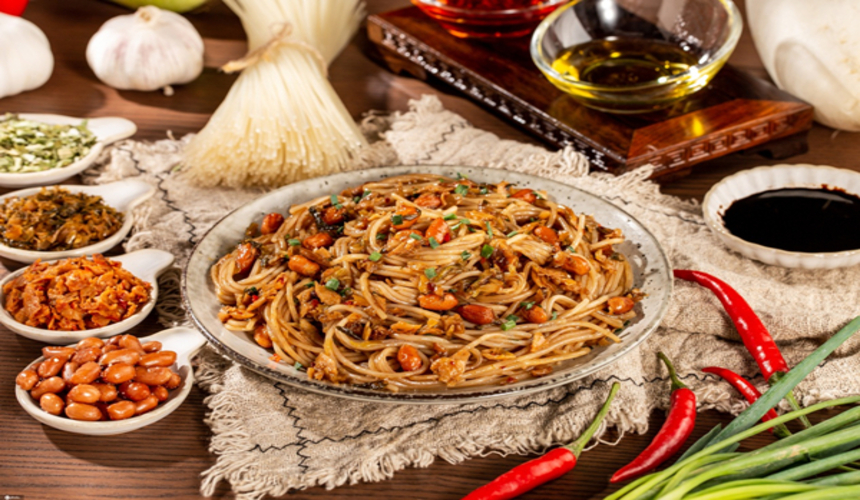Adventure for hiking and camping
Wugong Mountain may not be as well-known as the Yellow Mountains or Mt. Huashan, but it is renowned for its undulating alpine meadow. Whether you are a novice hiker or an experienced adventurer, a few days’ trip will provide an unforgettable hiking experience and access to magnificent meadows with seasonal scenery.
The best times to visit Wugong Mountain are during the spring and autumn seasons. Spring in Wugong Mountain is mild and pleasant, with blooming flowers and lush greenery, making it an ideal time for sightseeing, hiking, and exploring the natural beauty of the region. Autumn is also an excellent time to visit Wugong Mountain, with cooler temperatures compared to the summer months. The foliage transforms into vibrant shades of red, orange, and yellow, creating stunning landscapes. This is an ideal time to enjoy outdoor activities and explore attractions without the summer crowds.
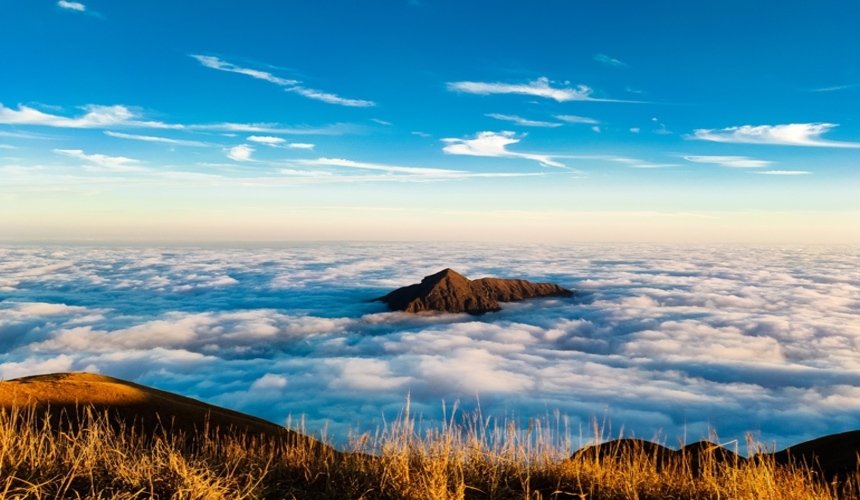
The Golden Summit
The area is the most popular scenic spot on the mountain, also known as Baihe Peak, and is the apex of Wugong Mountain. It is located on the Pingxiang side of the mountain, with an elevation of about 2,000 m (6,000 ft). The Golden Summit is the highest peak in Jiangxi province.
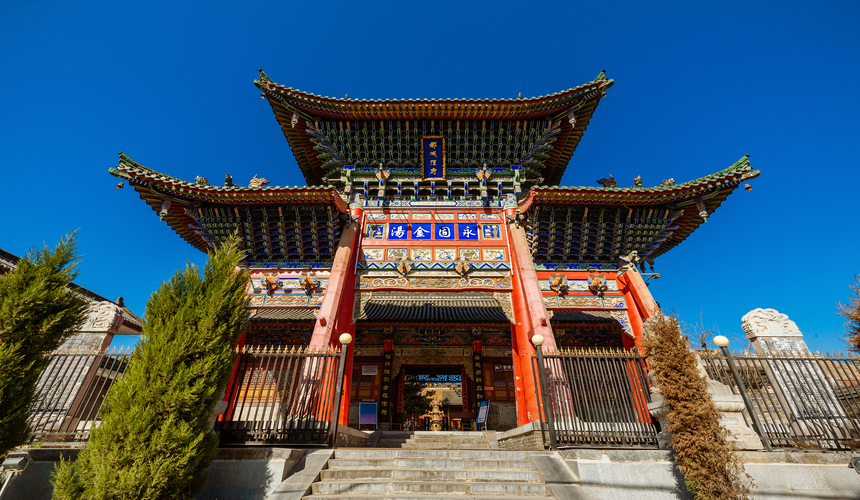
Shigu Temple
This temple has a history of over 700 years and is located at the foot of the Golden Summit. Originally named the Buddha Temple, legend has it that Qianlong, an ancient Chinese emperor, visited the temple and heard the sweet sound of streams. He followed the sound and discovered a stream striking a drum-shaped stone. Striking the stone with a crabstick produced an earsplitting sound. The emperor was delighted and renamed the temple 'Shigu Temple', which means 'stone drum temple' in Chinese.
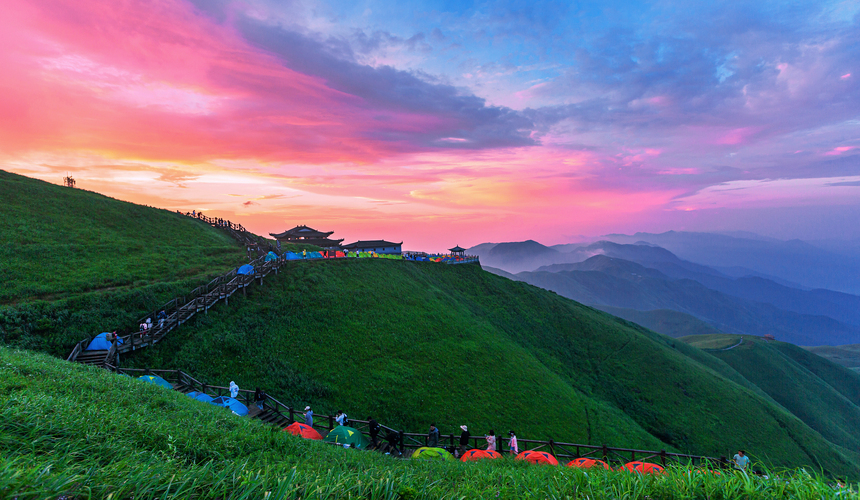
Ziji Palace
Ziji Palace is located halfway up the Golden Summit and is one of the three great temples on Wugong Mountain, along with Stone Drum Temple at the foot and Baihe Taoist Temple at the summit.The original temple was built in 1339 but was later destroyed. The current temple was rebuilt in 2005 and covers an area of 1,200 sq m (1,435 sq yd). It enshrines one Buddhist immortal and two Taoist immortals, showcasing the harmonious coexistence of two religions and the tolerance of Wugong Mountain.

Ancient Altars
The stone altars on the summit are remnants of a sacrificial culture that existed south of the Yangtze River. There are four altars, each with a unique orientation and architectural style, that are over 1,799 years old. The ancient people believed that worshipping at these altars would allow them to communicate with God and gain the power to fight against natural disasters.
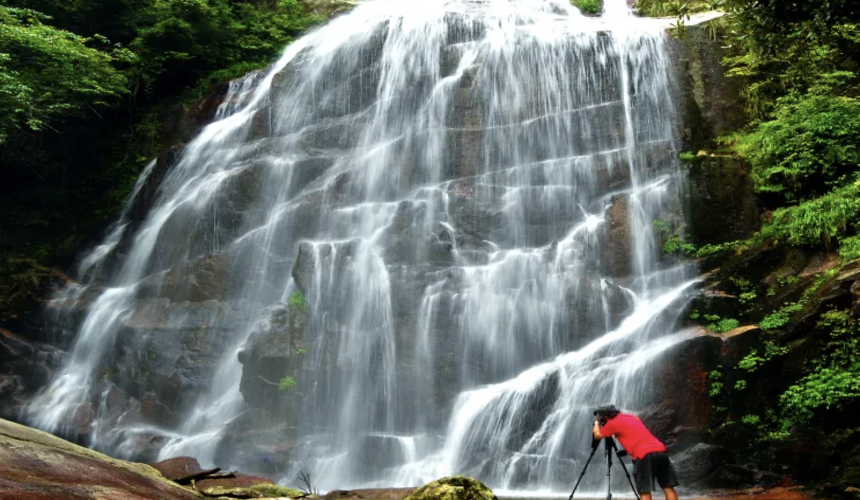
Spray of Waterfall out of a Golden Pot
This is the steepest waterfall on Wugong Mountain, with a 120 m (400 ft) drop. The galloping waterfall strikes the stones and becomes misty fog, creating a fairyland-like atmosphere. It is located on the middle mountain on
The cuisine in this area is called Gan Cuisine and is derived from the native cooking styles of Jiangxi province in southern China. Jiangxi cuisine has a long history and consists of local dishes that have developed into unique dishes with strong provincial characteristics. Special local products are widely popular. Jiangxi offers a variety of local snacks and pastries, each with its own unique characteristics and cooking methods.
Must-try: Three Cups of Foot Fish, Quick-fried Lushan Fish with Egg, Flavor Bake Bittern, Poyang Lake Large Meatball Shred, Kuanglu Stone Chicken Leg.
From Pingxiang
Pingxiang is most easily accessible place to the Wugong Mountain. Buses depart from Pingxiang Railway Station every 20 minutes from 07:00 to 17:00, and the journey takes approximately 1.5 hours.
From Nanchang
To reach Pingxiang, you can take a train from Nanchang. The journey takes approximately one hour by high-speed train and three hours by normal-speed train. If you arrive by ordinary train, you will reach Pingxiang Railway Station and then take the bus to Wugong Mountain from the train station. Alternatively, if you choose a high-speed train, you will arrive at Pingxiang North Railway Station, where there is a direct bus to Wugong Mountain. Upon exiting the train station, you will see a large sign in both Chinese and English indicating the ‘Wugong Mountain Bus Pick up Point’.
